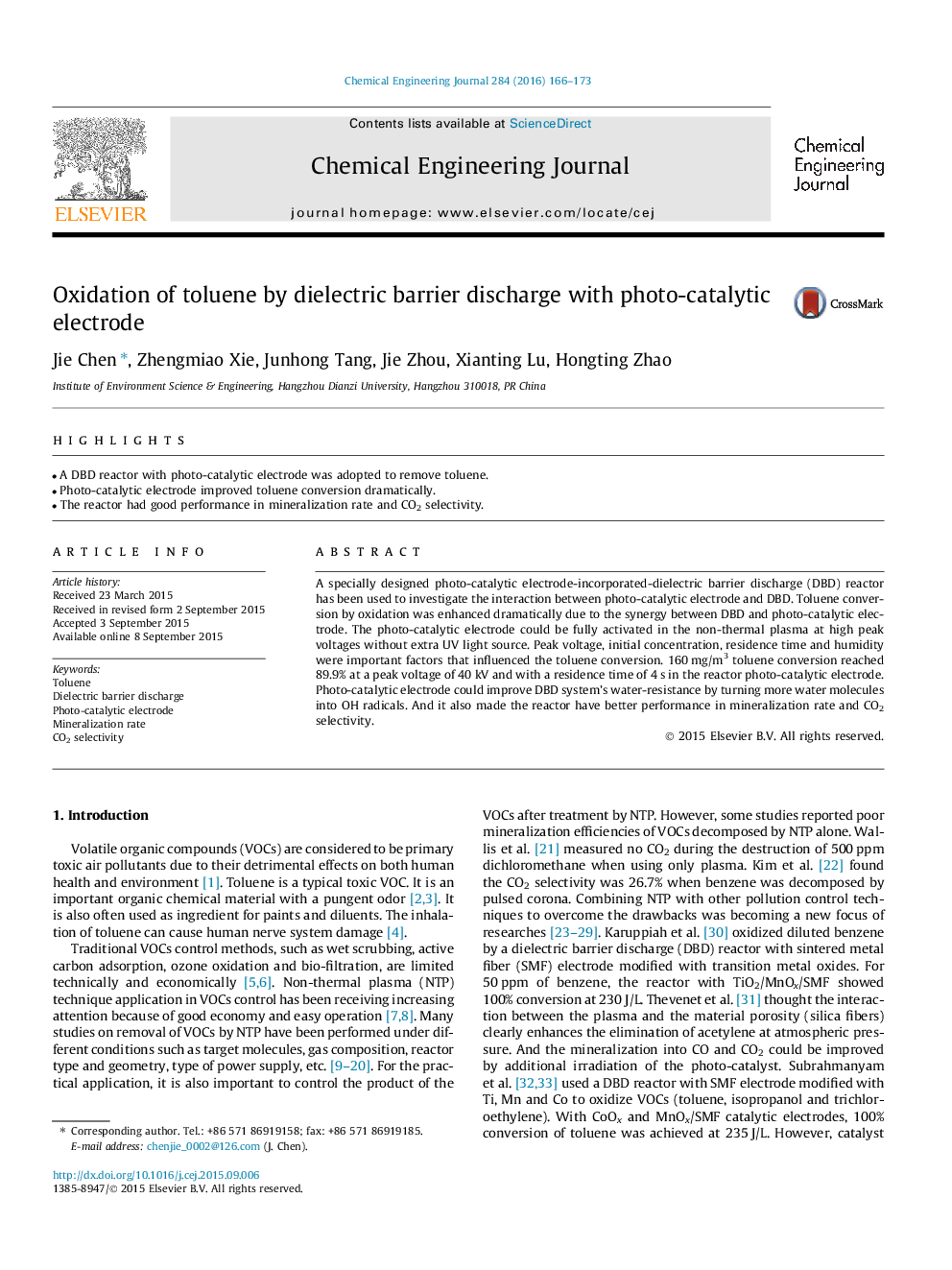| Article ID | Journal | Published Year | Pages | File Type |
|---|---|---|---|---|
| 145960 | Chemical Engineering Journal | 2016 | 8 Pages |
•A DBD reactor with photo-catalytic electrode was adopted to remove toluene.•Photo-catalytic electrode improved toluene conversion dramatically.•The reactor had good performance in mineralization rate and CO2 selectivity.
A specially designed photo-catalytic electrode-incorporated-dielectric barrier discharge (DBD) reactor has been used to investigate the interaction between photo-catalytic electrode and DBD. Toluene conversion by oxidation was enhanced dramatically due to the synergy between DBD and photo-catalytic electrode. The photo-catalytic electrode could be fully activated in the non-thermal plasma at high peak voltages without extra UV light source. Peak voltage, initial concentration, residence time and humidity were important factors that influenced the toluene conversion. 160 mg/m3 toluene conversion reached 89.9% at a peak voltage of 40 kV and with a residence time of 4 s in the reactor photo-catalytic electrode. Photo-catalytic electrode could improve DBD system’s water-resistance by turning more water molecules into OH radicals. And it also made the reactor have better performance in mineralization rate and CO2 selectivity.
